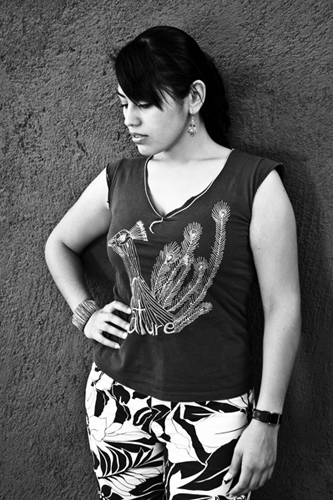Depression and a dislike of rules led Fernando Ochoa of Uruapan, Michoacan, México to drop out of school at age 16, but now at 22, photography lets him share his thoughts and perceptions with the world. “Although situations can leave scars,” he says in his self-taught English, “no matter what passes, the world is still beautiful.”
“In ‘Mix’ I did a zoom in-out. I guess it’s more like a gaze to things. Actual living goes too fast, I think we should pace out sometimes, look around nature and focus our minds. Sometimes it gets like a mass of thoughts, that most of the time are useless, and you just have to let them go.”
At age 18 Ochoa “was playing the photographer” and told his father “I want to take pictures.” His father, a hobbyist photographer himself, approved. He encouraged his son to join an online photo forum and upload the photographs he’d started taking. “None of them were good,” Ochoa recalls, “but everyone who commented said I had good aesthetics. That became a challenge for me to take better ones.”
“When I was younger, I thought what’s the actual hype with this date, the Tlatelolco Massacre … ignorant me, it was about freedom, that government turned out extremely bad, people died. In English the wall says ‘Because the color of blood can’t be ever forgotten, 2 of October, never forgotten.’ We tend to think those days are gone, but they are not.”
From his father, Ochoa learned “the basics: aperture, speed, rule of thirds” so well he has become “kind of a purist.” (Of course, like any good artist, he makes sure to “break all rules.”)
It was due to his own intellectual curiosity, however, that Ochoa learned enough English for his current job as a programmer and sysadmin — and for promoting his photography online. After installing a hotkey program, he was able to translate the English he saw on Internet Relay Chat channels. That helped him learn the language by immersion, “without much knowledge of it,” night after night. “I’m an auto-didact,” he says. “Knowledge is always a good thing.”
“Ricardo’s a cousin, I enjoy hanging out with him, everytime he comes to this city I invite him over my house, or we go to different places. He lives far from this city, in Monterrey.”
In cyberspace he’s traveled the world, but Ochoa hopes to someday see more than México in meatspace, too. Life is “about seeking more and more,” he explains; it’s “about pushing the ‘you’ to accomplish things.” He already understands art and humanity are about “empathy, mainly,” whereas as individuals we sometimes become “immersed too much in ourselves.”
“Oh, she’s my sister, my name is Fernando, her name is Maria Fernanda, I enjoy talking to her a lot, she was always constant company to me during childhood and still.”
México doesn’t bore him, however. Ochoa says he also has “to learn more about roots.” Some give the credit for Uruapan’s founding to Franciscan friar Fray Juan de San Miguel; others point out that the P’urhépecha Indians predated him. Ochoa does not hesitate: “the P’urhépechas. The whole language is there, the traditions, the native people.”
“That’s a sign with power, I had to represent it with a good blue sky. I took it from a different angle, so it looked wide-angle.”
Asked about his photography equipment, Ochoa responds, “It’s in the eye most of the time, sometimes it’s not dependent on equipment — you can make good photos with a 3MP camera. I use mostly DSLR’s, like a Nikon D70 or Nikon D300, since I can manipulate all settings, and they’re digital. I rarely use tripod, just for landscapes. So it’s me with the camera mainly. I shoot all in color, then I convert them to black and white if needed, then I use mostly curves for how the black and white will be shown. Sometimes real manipulation is needed, but I’m a purist in the sense of leaving all in its place.”
“I took this photo around two years ago. I had to represent my feeling I guess, I get somewhat fed up at times.”
Ochoa gives photography “as much effort” as he can. While many “don’t tend to explore further what can they do, what they cannot,” he does, and he will. He says he’d “love to go to an art school or by some other way learn more and more about photography.”
“We are constantly struggling with feelings that aren’t supposed to be there, we feel rather overwhelmed if we say we have a mental illness, but people stare and respond, ‘Are you serious?'”
For Ochoa, observation is a way to “immerse himself” in the world instead of losing himself in mental rumination. With his photography he hopes to “open broad” the constant question — Who am I? — and evoke actual emotion and community.
You can see much more of his portfolio at his website, where you can email him or subscribe to his feed of new photos.







 Twitter:
Twitter:
Join the conversation